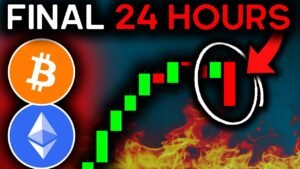Bitcoin Market Analysis: Short-Term Trends and Whale Behavior
Bitcoin (BTC) is currently at a critical juncture, experiencing tension between short-term holder resistance and substantial whale accumulation. With key price levels hovering near $106.2K for the average short-term holder and $97.5K for those holding for 3 to 6 months, the market is set for a psychological battle. This divergence could significantly influence Bitcoin’s near-term price movement, creating a fascinating dynamic for traders.
Understanding Price Dynamics
Bitcoin’s short-term holders are demonstrating distinctive entry zones. The average cost basis for new holders ranges from $106.2K to $97.5K, marking critical price points that might dictate trading behavior. As BTC trades around $105,606, there’s potential for those nearing breakeven to sell, adding resistance around $106.2K. Conversely, buyers looking for opportunities may view the $97.5K mark as an attractive buying zone. This interplay between selling pressure from short-term holders and buying interest could shape Bitcoin’s immediate future.
Whale Accumulation Confirms Market Sentiment
Recent data from IntoTheBlock reveals a noteworthy shift in whale behavior, with large holder inflows surging by an impressive 254.46% while outflows have decreased by 53.86%. This substantial accumulation by larger investors indicates a bullish divergence, suggesting that whales are confident in Bitcoin’s value at current price levels. This buoyant behavior could offer support for the $97.5K level and potentially allow for a breakout above the $106.2K resistance, provided the current trends continue.
The NVT Ratio: Overvaluation Warning?
The rising NVT (Network Value to Transactions) ratio, which has increased by 55.38% to reach 49.47, casts a spotlight on the relationship between Bitcoin’s market cap and network transaction volume. This ascending ratio could signal overvaluation, indicating that market prices are outpacing actual on-chain usage. Although spikes in NVT do not necessarily forecast an imminent price reversal, they often accompany periods of market exhaustion, especially when combined with waning momentum indicators.
Scrutinizing the Stock-to-Flow Model
Another element influencing Bitcoin’s valuation is the Stock-to-Flow (S2F) ratio, which has witnessed a 25% decline, undermining its scarcity narrative. As the dynamics surrounding circulating supply diminish, traders are increasingly focusing on real-time metrics like inflows and outflows. This shift reflects a growing skepticism towards traditional halving-driven valuation models. Although the Stock-to-Flow model still holds significance for long-term analysts, its immediate relevance appears to be dwindling amid changing macroeconomic conditions.
Momentum Indicators Under Pressure
Currently, Bitcoin is caught between an ascending trendline and crucial resistance levels near $106.2K, which coincide with significant Fibonacci retracement levels. Technical indicators like the MACD (Moving Average Convergence Divergence) show diminishing momentum, hinting at a potential bearish crossover. This scenario creates a state of indecision within the market. If Bitcoin fails to break above $106K, the price could retreat toward the $97.5K support zone. Conversely, a breakthrough could pave the way for an upward movement towards $110K or higher.
The Road Ahead: Breakout or Sell-Off?
Bitcoin’s ability to reclaim the $106.2K resistance level will largely depend on whether whale inflows can counterbalance the sell pressure from breakeven short-term holders. Presently, inflows appear robust, yet the momentum is beginning to wane. If whales continue to accumulate and the NVT stabilizes, a breakout could be on the horizon. However, a failure to maintain this momentum could give sellers an opening to retest the vital $97.5K price point.
In summary, Bitcoin’s current market landscape is characterized by critical psychological price levels, strong whale accumulation, and significant technical indicators that warrant close attention as the situation develops.

















